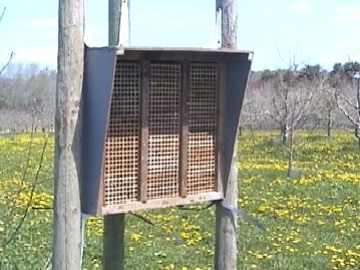Pollination, seed set and fruit quality in apple: studies with Osmia lignaria (Hymenoptera: Megachilidae) in the Annapolis Valley, Nova Scotia, Canada
DOI:
https://doi.org/10.26786/1920-7603(2014)11Abstract
The orchard crop pollinator Osmia lignaria (Hymenoptera: Megachilidae) was evaluated for apple pollination in the Annapolis Valley, Nova Scotia, Canada during 2000-2001. Resulting pollination levels (measured as pollen grains on floral stigmas), percent fruit set, mature fruit weight and seed yield were evaluated against an attempted gradient of Osmia bee density. In addition, fruit quality was assessed using two symmetry indices, one based on fruit diameter, the second on fruit height. Pollination levels, percent fruit set and mature fruit quality were much higher than minimums required for adequate crop production, and all but pollination levels showed weak but significant decreases at increased distance from the established nests, suggesting that even at low numbers these bees may have been making significant contributions to apple production. Fruit were typically of better quality in areas of the orchard adjacent to Osmia nests, having fewer empty carpels and greater symmetry; fruit quality (i.e., symmetry) is typically most reduced when two or more adjacent carpels are empty. Empty carpels reduce growth in fruit height rather than diameter, suggesting that symmetry indices using fruit diameter are not sensitive enough to evaluate fruit quality. Evidencing this, fruit without mature seeds observed in this study showed high symmetry based on diameter, but were greatly asymmetric with respect to fruit height. Further discussion on Osmia bees as apple pollinators and on methods of evaluating apple fruit quality with respect to seed distribution within the apple fruit are provided.
Downloads
Published
2014-02-28
How to Cite
Sheffield, C. S. (2014). Pollination, seed set and fruit quality in apple: studies with Osmia lignaria (Hymenoptera: Megachilidae) in the Annapolis Valley, Nova Scotia, Canada. Journal of Pollination Ecology, 12, 120–128. https://doi.org/10.26786/1920-7603(2014)11
Issue
Section
Special Issue on Shaping the Future for Pollinators in Farmed Landscapes
License
Copyright (c) 2014 Cory Silas Sheffield

This work is licensed under a Creative Commons Attribution 4.0 International License.











